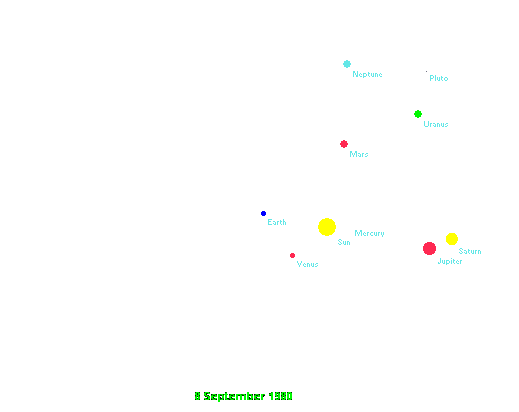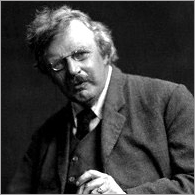Why the earth can’t be the center of mass of the universe
Unfortunately, it is the nature of dialogues that they tend to get longer and longer as they go along. Mr. Sungenis’ response to Part 1 of this dialogue ran 18 pages. In order to keep this discussion focused, I’m going to concentrate here on the single point that the earth is not, and cannot be, the permanent center of mass of a geocentric universe.
On a stylistic note, in his response, Mr. Sungenis alternated between addressing me directly and talking about me in the third person. In order to be consistent, I will address Mr. Sungenis directly throughout this discussion.
As usual, my words are in normal font, and Mr. Sungenis’ are bold.
Previous:
An obvious objection to geocentrism is that the earth isn’t nearly massive enough to cause the whole universe to orbit it. But it is true that planetary systems orbit their center of mass. Therefore, the idea that the universe orbits the earth because the earth sits at the center of mass was the most plausible explanation of geocentrism I had yet heard. Unfortunately, it didn’t take much thought to realize it wouldn’t work.
I’m not going to argue with a fool in his paradise.
Apparently not. In lieu of presenting a persuasive argument, you’ve opted to call me names and to deride me for my supposed “ineptness to handle this subject” and for my “poor understanding of cosmology.” Well, if I’m as inept a fool as you say, you should have no trouble providing a coherent and persuasive response to the proof I’m about to offer that the earth cannot be the center of mass of a geocentric universe.
Previous:
I have never been employed as an “orbital mechanic,” nor have I claimed to be a qualified critic of the geocentric issue, or to have “many qualifications” in this field.
Well, this is a little puzzling, since I distinctly remember Mr. Hoge presenting himself as an orbital mechanic when we were dealing with the GPS and GSS two years ago.
I’m afraid you’re mistaken. I have never claimed to be employed as an orbital mechanic, period. You can easily verify that fact by doing a text search on the files of our past communications.
In any case, Mr. Hoge is admitting that he doesn’t claim to be a “qualified critic of the geocentric issue,” yet Mr. Hoge has virtually made it a vendetta to squash geocentrism because he finds it “embarrassing.”
I hate break it to you, Bob, but geocentrism was squashed centuries ago. These days almost everyone thinks it’s just a quaint relic from the Dark Ages, when we didn’t know any better. To suggest seriously that geocentrism is true elicits from most people a response ranging from laughter to, well, more laughter. So, when you say that people should believe in geocentrism because “Geocentrism permeates Scripture,”1 you don’t make geocentrism look credible, you make Scripture look ridiculous.
That’s a serious problem, Bob. Physical truths that we can learn by observation and by the experience of our own senses are the most basic and obvious kind of truth. So, if you convince people that the Bible can’t even get that right, why should they believe it when it talks of things they can’t see and experience? As St. Augustine said, “If they find a Christian mistaken in a field which they themselves know well and hear him maintaining his foolish opinions about our books, how are they going to believe those books in matters concerning the resurrection of the dead, the hope of eternal life, and the kingdom of heaven, when they think their pages are full of falsehoods on facts which they themselves have learnt from experience and the light of reason?”2
This is why I’m working to debunk geocentrism. If it were just some quirky personal opinion of yours, I wouldn’t care. But when you, a prominent Catholic author, claim that the Bible teaches what is universally – and rightly – regarded as an absurd, pre-scientific view of the universe, you make a laughing stock of the Word of God, and confirm in the minds of unbelievers that its pages are full of falsehoods, myths, and comical misdescriptions of the physical world.
As for my own credentials, since I never claimed to be an “orbital mechanic,” then I have nothing to prove.
On the contrary, you have a great deal to prove. You’re the one who’s writing a book that seeks to show that all of contemporary cosmology, from Galileo to Einstein, is wrong. I think it’s quite reasonable to ask what qualifies you to write such a book.
I also have had a life-long interest in astronomy, and was a physics major in college, but I didn’t tout that as being the authoritative basis for my dealing with geocentrism, as Mr. Hoge did with his so-called “qualifications.”
I did? You’re going to have to make up your mind, Bob. A minute ago you said I admitted that I didn’t claim to be a qualified critic of the geocentric issue.
Previous:
Mr. Sungenis is right, I never considered the “center of mass argument”. There are two reasons for that. One is that all of my previous critiques of geocentrism have been aimed at proving that the earth rotates on its axis, not that it orbits the sun. The “center of mass argument” is irrelevant to the question of whether the earth rotates. The second reason I never considered the “center of mass argument” before is that I had never heard of the “center of mass argument” before.
Perhaps Mr. Hoge is just in this to win an argument. I don’t know. Any normal person would admit that it was his fault for not considering one of his opponent’s major planks of argumentation.
Well, Bob, my only opponent has been you, and you’ve never mentioned this to me before. How is that my fault? If this is one of your “major planks of argumentation,” please show me where you presented this argument on your website two years ago, when we were discussing satellite motion. For that matter, show me where this argument is presented on any geocentrists’ website. I couldn’t find it even when I was looking for it deliberately. As I said before, if this is one of your major arguments, you’ve hidden it well.
It’s there, he just missed it, and that is probably because he doesn’t know what to look for.
That’s quite possible. But since you do know what to look for, why don’t you show me where it is. Show me where you discussed the center of mass concept on your own website two years ago. And give me a link to any other geocentrist’s website where that concept is discussed. Point out the specific paragraph on that page where the center of mass argument is advocated. I would really like to see what other geocentrists say about this argument.
Previous:
what I said was if the celestial bodies are put in the proper place, and stay there, the earth could be at the center of mass of the universe. But that isn’t the case.
We all know the celestial bodies don’t “stay there,” Mr. Hoge, but apparently you forgot that the stars have a precessional movement.
Yes, I know. I mentioned it several times, although I didn’t use the word “precession” to describe it. But as I explained, that motion can’t possibly cause the center of mass of the universe to remain at the earth. In fact, it’s part of the problem. The only way the shell of stars could counterbalance the mass of the sun is if the shell were heavier on the side opposite the sun. But as the shell moves relative to the sun, the “heavy side,” if there is one, will eventually be located on the wrong side of the sun.
Previous:
Mr. Sungenis makes no attempt to explain how the center of mass can stay put when the heavy objects in the system, especially the sun, move. That’s the question he must answer: If the sphere of stars is heavier on one side, in order to counterbalance the mass of the sun, how does the center of mass remain at the earth when the sun moves over to the “heavy” side of the sphere of stars?
Answered above, and the answer was already implied in my last post. In fact, the uneven distribution of the mass in the universe need only be enough to allow the center of mass to be contained within a few hundred miles of the diameter of the Earth in order to allow both a precession of the universe in its annual rotation, and allow the center of mass to remain within the circumference of the Earth. In fact, just a slight precession will be enough to raise and lower the tides
Oh, my! That is, as you would say, a startling admission. If the center of mass of the universe doesn’t exactly coincide with the center of mass of the earth, the earth will “wobble” every day, as both it and the rest of the universe orbit the universe’s center of mass. But theologically, you are precluded from admitting that the earth moves even slightly. Therefore, if you’re going to attribute the earth’s non-motion to the fact that it is the center of mass of the universe, it is necessary for you to assert that the center of mass of the universe always coincides exactly with the center of mass of the earth. But now you can’t assert that, because you’ve just said that it’s the offset between the center of mass of the universe and the center of mass of the earth that causes the precession of the universe and the raising and lowering of the tides. You just painted yourself into quite a corner there, Bob.
Previous:
The mass distribution of the solar system is constantly changing as the various planets move in their orbits around the sun.
No, he doesn’t know that either. That’s only what the computer tells him from a heliocentric perspective, but he hasn’t proven that the heliocentric perspective is correct.
Bob, unless you want to claim that the planets don’t move, what I said is unarguable. Perhaps you didn’t understand what I meant, so I’ll clarify:
- The planets have mass.
- At any given moment they are arrayed about the sun in specific locations.
- That specific arrangement of the planetary masses is called the “mass distribution of the solar system.”
- The planets move.
- As the planetary masses move, the mass distribution of the solar system, i.e., the arrangement of masses relative to the sun and to the earth, changes.
That’s true whether the universe is heliocentric or geocentric. The question is not whether the mass distribution of the solar system changes, the question is whether the masses outside the solar system (i.e., the stars and galaxies) are able to counterbalance those changes so as to keep the center of mass of the universe located at the center of mass of the earth. As you’re about to see, they aren’t.
Previous:
Geocentrism requires that the earth be the permanent center of the universe, but I don’t see how that’s possible if the masses in the universe are moving relative to each other, which they are.
Mr. Hoge answered his own question but didn’t realize it. If the masses are moving “relative” to each other, then we can all imagine a situation in which the “relative” masses can offset each other.
 |
Okay, then let’s get specific. The figure on the left is a “snapshot” of the universe showing the location of the planets and the orientation of the “sphere of stars” on September 8, 1980, at 8:00 AM, Eastern Time. I chose that specific date for a reason. You’ll notice that the sun, the moon, and all of the visible planets were located to the left of the earth that day. The other planets, though not shown in the figure, were also to the left of the earth. In other words, all of the solar system’s mass was on the left side of the earth.
Now, it should be obvious that if the masses in the sphere of stars are evenly distributed, they’ll cancel each other out and the center of mass of this system will be somewhere to the left of the earth, because that’s where most of the mass is. In order for the center of mass of the whole system to coincide with the center of mass of the earth at this particular moment in time, the sphere of stars would obviously have to be heavier on the right side, near the constellation Aquarius, in order to compensate for the masses of the sun and planets on the left side.
For the sake of argument, let’s say that the sphere of stars is heavier on the right side. Let’s say that on September 8, 1980, at 8:00 AM, the arrangement of the stellar and planetary masses was such that the center of mass of the entire system coincided with the center of mass of the earth.
 |
Now, let’s fast-forward to the same date, 17 years later. This is what the solar system looked like on September 8, 1997, at 8:00 AM. The sun and the stars were in the same position, of course, just as they are every September 8th, but the heaviest planets, Jupiter and Saturn, had moved over to the right side of the earth. So had Uranus and Neptune, but not Pluto. Now, Jupiter and Saturn are by far the heaviest planets. Together, they account for 92% of the planetary mass of the solar system. That means that a significant rightward shift in the mass distribution of the solar system had occurred between September 8, 1980, and September 8, 1997, and that means that the center of mass of the system will have shifted to the right, too, away from the earth.
You have pointed to the sphere of stars as the potential counterbalance to the planets. That’s why I deliberately chose two “snapshots” taken on the same date and time. That effectively removes the sphere of stars as an explanation, because all of the stars and galaxies are in exactly the same position relative to the earth in both instances. Whatever their mass distribution is in the first instance, it’s exactly the same in the second instance. But the planetary masses have been rearranged. Most of the planetary mass has moved from the left side of the earth to the right side of the earth. What compensates for the movement of those masses?
In these two pictures, I have accounted for every mass in the universe. Unless you can you give me a plausible explanation of how the center of mass of this system can be at the center of the earth at both of these moments in time, my objection stands, and the center of mass argument is refuted.
If Mr. Hoge already admits that in his own system a group of celestial bodies will “balance each other out,” then it is no contradiction for me to apply the same principle to the geocentric system and say that God has so aligned the stars and the sun so that, with the Earth as the center, they will all “balance each other out” and allow the Earth to remain the center of mass.
Bob, you need to remember that if the earth is the permanent center of mass of the universe, this balancing you mention has to happen all the time. That’s each and every moment of each and every day. In other words, if you’re right, it would be possible to take a “snapshot” of the universe at any moment of any day of any month of any year, and show that the masses are arranged so that the center of mass of the system coincides with the center of mass of the earth.
I don’t think you realize how impossible that is, or how complex the motion of the solar system is – especially if it’s geocentric. The figure below should make this clear. It shows the motion of the geocentric universe over a one-year period, from September 8, 1980 to August 31, 1981. Although it looks as if the sphere of stars isn’t moving, that’s not the case. The frames of the animation were taken at one-week intervals, so the sphere will have rotated seven times between each frame. But each “snapshot” was taken at the time of day when the sphere of stars was located exactly where it was the week before.
 |
As the sun and planets go looping and cork-screwing around the sky, it becomes clear that the arrangment of the planetary masses is like the proverbial snowflake: they’ll never be arranged the same way twice. In this particular year, all of the solar system’s masses are located to the right of the earth in September. As the year progresses, they swing around above the earth, and then some of them pass to the left of the earth and others pass to the right. Obviously, there’s no way the earth can be the center of mass of that cartwheeling, constantly-rearranging system on each and every day of the year. And because the sphere of stars is in the same position in each “snapshot,” it can’t possibly counterbalance the other masses in the system as they move to different positions.
The stars themselves don’t move, but the universe itself does, as it moves in an annual precession.
Yes, but as you said, this is an annual motion. On any given date, the universe will be in the same position it was the year before, and the year before that, and the year before that. But the planets don’t move in annual cycles. Neptune, for example, takes 165 years to go around the sun. You can give the “sphere of stars” whatever annual motion you want; there’s no way it can compensate for the motion of Neptune, or any of the other planets. Further, a “sphere of stars,” no matter how much it may wobble and precess, still always moves as a single unit. If it moved in sync with any one of the planets, it would be out of sync with all the others.
If you admit that your objection falls apart if “there were some other masses out there that moved in such a away as to precisely compensate for the motion of the planets” and you admit that you haven’t made a thorough investigation into those forces but only assume that they cannot do what I claim, then you really don’t have much. I’m not interested in what your theories are. I’m interested to know if you know, as a brute fact, that it is impossible for there to be “masses out there that moved in such a away as to precisely compensate for the motion of the planets.”
Yes, I know it as a brute fact. I’m sure you’ll agree with me that the only masses in the universe are those that are inside the solar system, and those that are outside the solar system, right? Well, in the figure above, I accounted for all of the masses outside the solar system by choosing a time of day for each frame at which the universe was located in the same orientation relative to the earth.
That only leaves the masses inside the solar system. Obviously, those masses don’t balance out at the center of the earth each and every day. In order to make such a thing happen, there would have to be a discrete mass that moves in sync with each planet (and the sun), and that is precisely the right mass to be a counterweight to that planet. What would such a system look like? Basically, it would look like a mirror-image of the solar system, as shown below:
 |
It’s easy to see that this system is always in balance, but unfortunately, this system doesn’t exist. So, yes, I do know as a brute fact that there are no masses out there that can possibly counterbalance the kaleidoscopic motion of the major celestial objects in our solar system.
Also, bear in mind that we’ve been viewing the planets from above and treating them as if they all orbit in the same plane, so that their distance from the earth is always purely horizontal. But in reality, all of the planets orbit in different planes, so while they’re moving in-and-out, and round-and-round relative to the earth, they’re also moving up-and-down, and at different rates. That added dimension makes it exponentially more unlikely that these masses could ever balance out so that their center of mass is at the center of the earth. But your theory requires that their center of mass must always coincide with the center of mass of the earth, every hour of every day, and that is a physical impossibility.
Now, I know that you think geocentrism is a divinely-revealed truth, so I don’t expect you to admit that I have disproved it. But I have disproved the idea that the earth is always the center of mass of the universe. So, if you’re going to stick with geocentrism, you’re going to have to come up with some other theory to explain why the universe orbits the earth.
I’ve been very specific here, Bob, right down to times and dates. In the above animations I accounted for the location of every mass in the universe. I expect you to be equally specific in reply. If you think you can explain how the earth is at the center of mass of this moving system in each and every frame, please do so. But if you simply dismiss my evidence with a wave of the hand and another desperate, faith-based assertion that everything somehow balances out, I’ll take that as an admission that you have no answer, and I will consider this debate won.
2 St. Augustine, de Genesi ad litteram, chapter 19, A.D. 401



